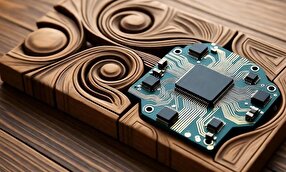Iranian Scientists Produce Digital Slide Scanner

“This device allows doctors to magnify slides up to 2,000 times. This innovation can revolutionize pathology and disease diagnosis processes,” Amin Rafi’ Raad, the technical and production manager of the project, told ANA.
“This scanner is a smart, practical, optimized, and cost-effective device for converting glass slides into virtual slides (digital slides). The slide scanner makes it possible to scan all types of pathology, biology, hematology, etc. slides at desired magnifications and with the highest quality,” he added.
Noting that the slide scanner device, utilizing its unique artificial intelligence, can be used for a variety of research and diagnostic applications, as well as eliminating the need for an analog microscope in the laboratory, at the highest level of quality,
This device allows doctors to, instead of viewing slides under a microscope, place them in the device and scan the slides completely with any magnification up to 2000 times, Rafi’ Raad said, “This scanner gives doctors the ability to view their slides remotely from anywhere in the world and share them with other doctors. They can mark different parts of the slide and record their comments in text or audio."
A Microscope Slide Scanner, also known as Digital Pathology Scanner or Digital Histology Slide Scanner, produces quick, reliable and high-resolution images of a glass slide. Pathologists, histologists, biologists, hematologists, vet experts or medical professionals now have the ability to scan single or often multiple slides. They can upload these images onto a network, iCloud store for remote access and collaboration among colleagues immediately or within a few minutes. Features may include remote control, real-time viewing, sharing, commenting, measurements, expert notes, reports, and many advanced software integration.
A Digital Pathology Scanning System may provide automated tissue slide imaging, counting and measurement for both fixed or live-cell assays. A microscopy system for slide scanning have modes for fluorescence, phase-contrast, polarizing and darkfield imaging. All slide scanners work for a standard size 1″x3″ (25x75mm) and some for double size 2″x3″ (50mm x75mm), either glass or plastic slides with/without coverslips.
4155/v





















